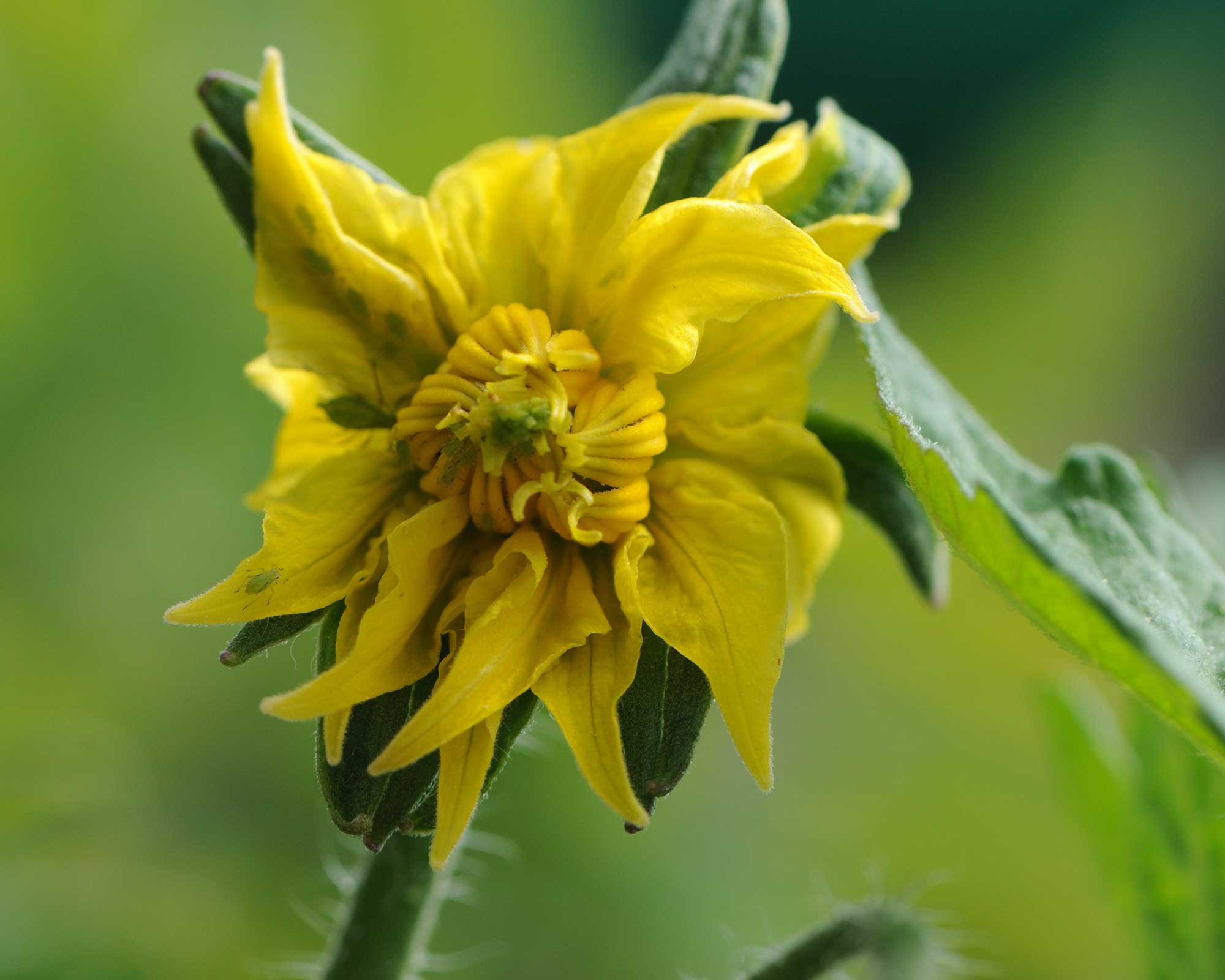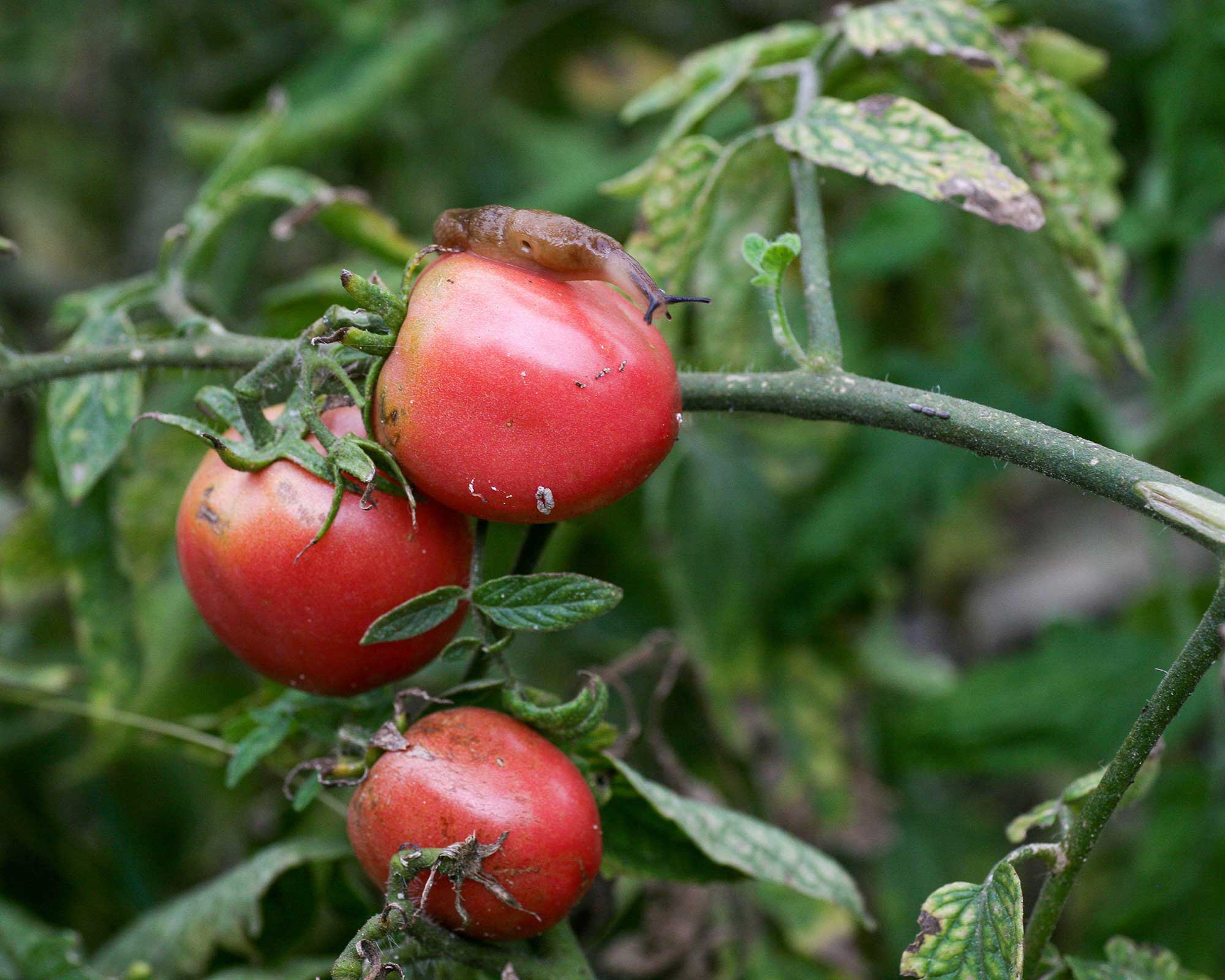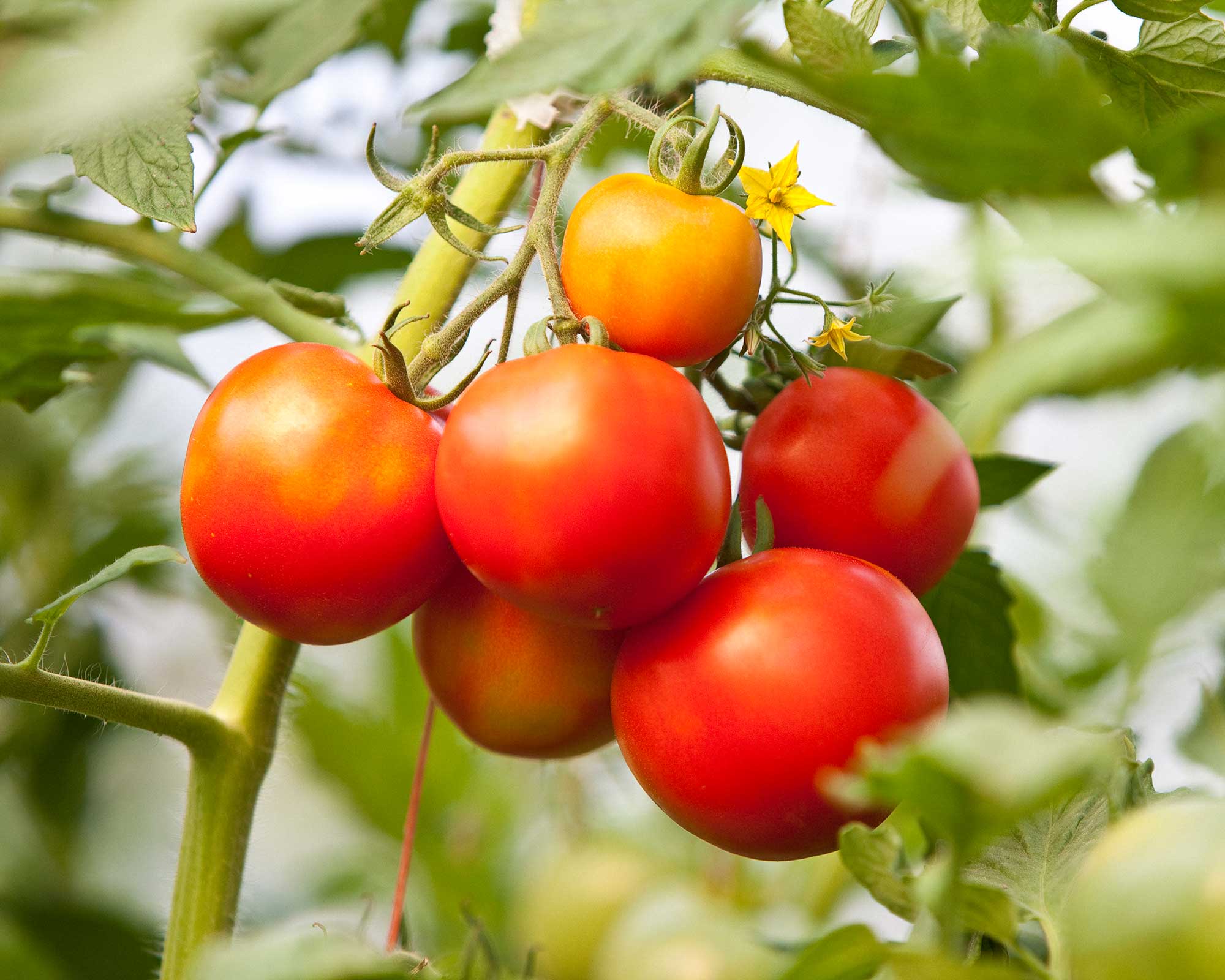Tomato pests: top tips on 5 common intruders
Tomato pests can be a nuisance, but our advice will help protect your plants


Getting the lowdown on common tomato pests is always a good idea if you're tending to these delicious crops in your garden. That way, you can spot an interloper early, and take action as soon as possible.
After all, if you've put in all the effort of growing tomatoes, having your dreams of a healthy harvest dashed by intruder insects can be disheartening, to say the least. So, to keep your plants protected and enjoy plenty of juicy fruits, we've rounded up advice on the tomato pests to look out for and what to do should you spot them.
5 common tomato pests to look out for
Keep your kitchen garden in top health by keeping an eye out for these tomato pests.
1. Tomato moth caterpillar
Tomato moth caterpillars devour foliage and feed on fruit. Look out for shredded leaves, tunneled fruits, and trails of droppings – all signs that these intruders have got a hold of your crop.
You can pick them off by hand, advises John Negus, a gardening expert from Amateur Gardening. Additionally, spray with a contact insecticide that's safe for use on edible crops, such as BugClear for Fruit & Veg (available on Amazon).
'After harvesting fruit and removing spent plants, disinfect the greenhouse with a garlic candle, which most garden centers stock,' John continues. ' It will destroy overwintering moths and eggs.'

This caterpillar will nibble your tomatoes' leaves
2. Tomato whitefly
Tomato whitefly are another interloper to look out for. These tiny tomato pests can quickly take over a crop, weakening plants while covering them with a sticky residue. They're not just a nuisance on tomato crops – they can be a problem for cucumbers, too, as well as other plants in the greenhouse.
'Initially, direct a gentle spray of water over the foliage, forcibly enough to dislodge eggs, nymphs, and adults, but not enough to damage leaves,' says John. 'If you don’t want to do that, wear a pair of rubber gloves and gently run your fingers along affected plants, squashing the whitefly.
'Sticky traps are one option, but they will also catch beneficial insects, such as pollinators and predators, so I tend to avoid using them where possible,' he continues. 'If the problem persists, I urge you to introduce Encarsia formosa, a tiny parasitic wasp that feeds on whitefly. Introduce it at seven-day intervals for a month or so to catch all stages of the pest. They will die off when the season ends and the temperature drops.'

Whitefly covers plants in a sticky residue
3. Aphids
Aphids are very common tomato pests. Small, green, and pear-shaped, they'll suck the sap from your plants and although smaller numbers can often be tolerated, severe infestations can cause substantial damage.
Identify these intruders by looking for large clusters on the underside of leaves. Remove and discard affected foliage where possible. Incorporating wildlife garden ideas to your veg patch to encourage natural aphid predators can help to control them. Organic insecticides designed for edible crops may also do the trick if you're after a quicker approach.
Our dedicated guide on how to get rid of aphids has more info.

Aphids suck the sap from tomato plants
4. Slugs
Ah, slugs – every gardener's woe! These pests feast on all sorts of plants, and, given the chance, tomatoes are no exception.
Chomping through leaves and fruit overnight, they're certainly a nuisance. Keep vigilant and take action as soon as you spot them – they become truly troublesome in large numbers.
Luckily, there are lots of natural ways to get rid of slugs in the garden, including setting up traps, creating barriers, and encouraging their predators to your plot. Our dedicated guide explains all.

Slugs are a nuisance for all sorts of plants
5. Tomato eelworms
These tomato pests are also known as nematodes. The most common one to affect the crops is the root-knot nematode.
As the name suggests, these intruders affect the roots of tomatoes, turning them knobbly, which prevents the plants from getting the nutrients they need. They commonly affect peppers and carrots, too.
They're a tricky pest to control, so the best approach is to look for tomato varieties that have resistance to them. Crop rotation can also help.
Dig up and dispose of plants that are already badly affected and avoid growing more tomatoes, peppers, or carrots there again.

Avoid these common tomato pests to get a healthy, abundant crop

The garden was always a big part of Holly's life growing up, as was the surrounding New Forest where she lived. Her appreciation for the great outdoors has only grown since then. She's been an allotment keeper, a professional gardener, and a botanical illustrator – plants are her passion.
